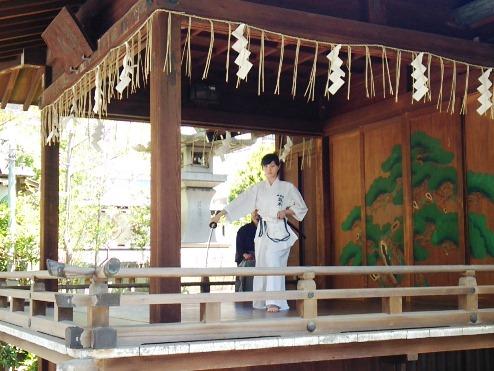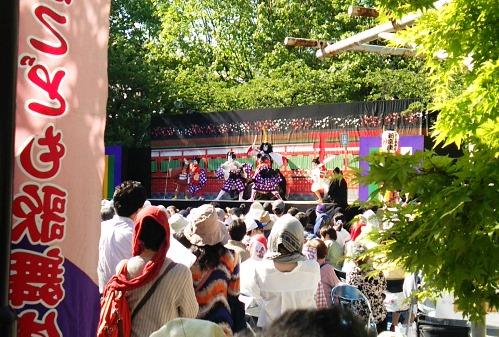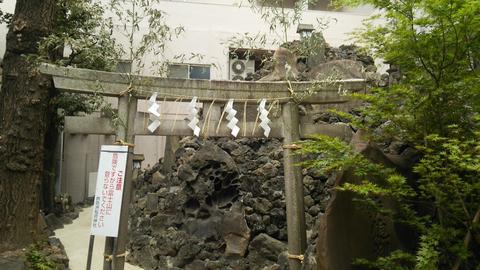On the 5th, I went to the festival of Teppozu Inari Shrine at Minato 1-chome, which is held every year during GW. The origin of Tepposu Inari Shrine dates back to the early Heian period, and after several transitions, it is located in the present area from the early Meiji era. In the Edo period, this area was a place where boats arrived from various places and flourished as Edo Minato, and the religion of sailors was also gathered. There is also the only Fujizuka in the ward on the grounds. Fujiko, whose religion is based on Mount Fuji, was popular during the Edo period and was built around Edo. The rebuilding of the company office, which had been ongoing since last year, has been completed, and the area around Fujizuka has been neatly organized. When I was a child, I remember being able to climb freely, but now I'm sorry that I can't climb normally. By the way, it seems that you can climb on the opening day of Mount Fuji on July 1st.
There was a Kagura Hall on the grounds, where he performed sword dance and dedicated Matsumae Kagura from Hakodate, Hokkaido. I felt fresh because I didn't usually have the opportunity to interact with each other. The day before, portable shrine traveled to Shimbashi Enbujo and Kabukiza, where the town council of shrine parishioner was located.

![170505_163206.3gp_snapshot_01.34_[2017.05.07_02.14.15]. jpg](https://en.tokuhain.chuo-kanko.or.jp/archive/2017/05/08/170505_163206.3gp_snapshot_01.34_%5B2017.05.07_02.14.15%5D.jpg)
By the way, every year, Shintomiza Children's Kabuki, which is held in Kagura Hall, was performed with a new performance at the adjacent Gunpow Park on the 10th anniversary, and many people came to see it. The children were performing loudly with a loud voice, thinking that it would be hot in a kimono in a temperature close to 30 degrees Celsius. Chuo-ku is a place related to Edo Kabuki, so I hope you will continue in the future.
![170505_145207.3gp_snapshot_02.17_[2017.05.07_02.02.04]. jpg](https://en.tokuhain.chuo-kanko.or.jp/archive/2017/05/08/170505_145207.3gp_snapshot_02.17_%5B2017.05.07_02.02.04%5D.jpg)



